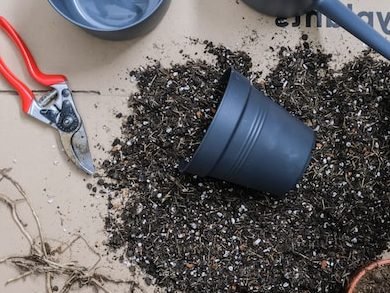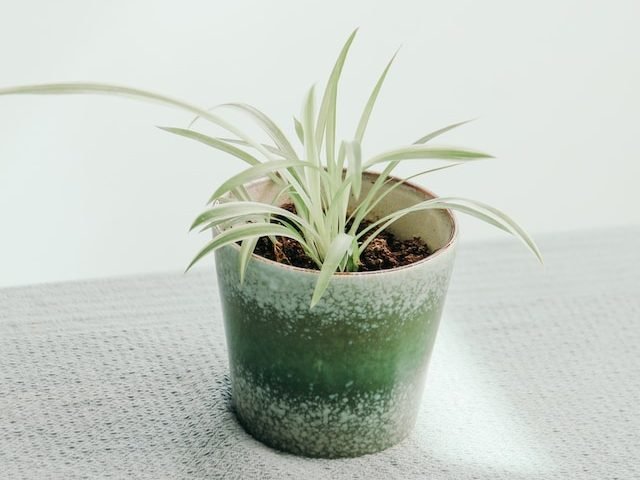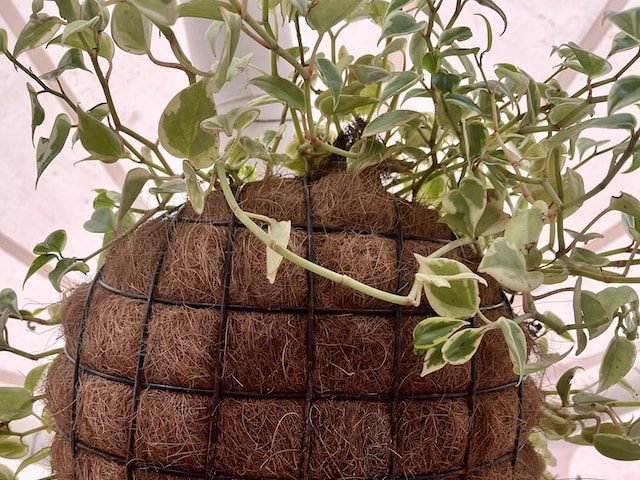Red Bromeliad Flower

Are you searching for a charming red-flowering houseplant to elevate your home’s aesthetic? Well, you’ve come to the right place. Below we will be highlighting some of our favorite houseplants with gorgeous red flowers.
We will also go through the numerous benefits of having red-flowering houseplants, and guide you through selecting the perfect spot for your plants, along with a few decorating tips to help you incorporate these plants seamlessly into your home decor.
Contents
- Why Choose Houseplants with Red Flowers?
- Top 10 Houseplants with Red Flowers
- Choosing the Right Location for Houseplants with Red Flowers
- Common Issues with Houseplants with Red Flowers
- Top Tips to Keep the Red Flowers Healthy
- Decorating Tips: Incorporating Houseplants with Red Flowers
- Frequently Asked Questions about Houseplants with Red Flowers
Why Choose Houseplants with Red Flowers?
First off, we have to mention the distinct visual appeal. A houseplant with red flowers can easily become a standout piece in your decor, catching the eye of anyone who enters the room.
Apart from aesthetics, there’s substantial science to back the benefits of having plants at home. Indoor plants enhance oxygen levels and humidity, leading to better air quality. And when you choose houseplants with red flowers, you get the added bonus of surrounding yourself with beautiful flowers.
- Psychological Benefits: Studies have shown that the presence of indoor plants can decrease stress and alleviate mood, making your home a happier and healthier place.
- Improved Concentration: Plants have been linked to improved concentration and productivity, making them a great addition to any home office or study space.
- Health Advantages: Houseplants act as natural air purifiers. They absorb toxins and release oxygen, thus improving your home’s air quality. This can make a significant difference for anyone with allergies, asthma, or other respiratory conditions.
Top 10 Houseplants with Red Flowers
If you’re looking for houseplants with stunning red flowers to add a pop of color to your space, here are our top 10 choices. These plants are not only aesthetically pleasing to the eye but also easy to care for, making them ideal home companions.
- Aeschynanthus radicans: Commonly referred to as the ‘lipstick plant’. Its glamorous trailing vines bloom bright red flowers that resemble a tube of lipstick, adding a dramatic touch to your indoor space.
- Anthirium andraeanum: Also known as ‘Flamingo Flower’, this plant is a classic choice for an indoor setting. It has dark green leaves that contrast beautifully with its glossy, heart-shaped red flowers.
- Begonia: These plants boast a variety of vibrant colors, but their red flowers are particularly striking. They prefer ample sunlight and humidity, perfect for a bathroom window sill.
- Bromeliads: This colorful tropical plant is your ticket to an instant indoor oasis. Although Bromeliads are available in a spectrum of colors, the varieties with red flowers make a vivid statement.
- Guzmania lingulata: Named ‘Scarlet Star’, this plant is part of the Bromeliad family. It’s characterized by its bristly red flowers which sit atop a bed of thin, arching leaves.
- Kalanchoe blossfeldiana: These succulent plants are low-maintenance and boast bright, dainty red flowers—ideal for a sunny window ledge or workspace.
- Cyclamen: Known for its striking heart-shaped leaves and showy flowers, the cyclamen is a favorite among indoor gardeners. The red flowering Cyclamen is specifically ideal for adding a festive touch during the holiday season!
- Clivia miniata: A hardy plant with beautiful, trumpet-shaped red flowers. This is a long-lived plant that is perfect for those without a green thumb.
- Impatiens walleriana: Often known as ‘Busy Lizzie’, this plant is an enchanting option for indoor gardening. It produces a profusion of cheerful red flowers year-round.
- Geranium: Available in a variety of colors, Geraniums with red flowers are one of the most popular choices for indoor plants. They are easy to grow and provide stunningly bright color.
Choosing the Right Location for Houseplants with Red Flowers
Once you’ve chosen your perfect red-flowered houseplant, the next big question is, where is the best place to display it? There are a few factors to consider when placing these houseplants compared to plants that don’t have flowers.
Light Requirements
All houseplants need light to perform photosynthesis and to flourish but the general rule for houseplants with red leaves is to avoid direct light. This can very quickly dry out the petals on the flowers, leading to a limp and brown plant.
Beyond just avoiding direct light, there are some nuances that depend on the specific variety. While Anthurium and Aeschynanthus Radicans require lots of indirect light, Begonias can flourish in more shady areas.
Make sure you find out the light requirements of your specific red flowering plant so you can find the perfect spot for it in your home.
You may also need to consider moving your plant around a bit depending on the season. A spot that might get enough light in summer may be too dark in winter.
It’s also worth noting that the risk of sunburn is a lot lower in winter as the sun just isn’t as strong, so you can get away with placing your flowering houseplants a little closer to the window in the colder seasons.
Temperature &Humidity
The majority of houseplants with red flowers originate from the tropical regions, hence, they favor a warmer and more humid atmosphere.
However, extreme fluctuations in temperature can stress them out. That’s why positioning them away from areas that experience sudden temperature changes like air conditioners, heaters or drafty windows is vital.
If your plant is in a spot with a lot of heat or humidity, it can lead the flowers to wilt and go soft. This is irreversible so once the damage has been done, there’s nothing more you can do (which is why prevention is the best method here).
We strongly advise buying a digital thermometer with a humidity monitor built in so you can keep tabs on the environment around your plant, and make sure the red flowers bloom!
Space Constraints
Lastly, bear in mind the space constraints. Consider the potential size of the plant when it’s fully grown.
Some, like the Red Agloenema, can reach several feet in height, which might not be feasible in cramped spaces. That’s where smaller alternatives like Cyclamen come in handy. So, think ahead and visualize the space before planting.
Common Issues with Houseplants with Red Flowers
One of the most common issues growing houseplants face is improper watering as both over and under-watering can damage your plants.
Overwatering can lead to root rot and soft limp flowers, a potentially fatal plant disease, while underwatering can lead to crispy flowers and leaves and hindered growth.
Spotting pests and diseases
Pests like aphids, spider mites, and whiteflies can invade your houseplants and suck the energy out of the leaves. The red flowers are often the first thing to show signs of damage as your plant doesn’t have the energy to keep them in bloom.
Fungal diseases, like powdery mildew or root rot, can also pose significant threats to your red-flowering beauties so spotting them early is crucial. Watch for discolored leaves, brown spots, or wilting flowers, as these can all be signs of a disease.
Addressing nutritional deficiencies
Yellowing leaves, slow growth, and small new flowers can all indicate that your plant might be lacking some critical nutrients.
A balanced liquid plant fertilizer could be a quick fix for this but don’t give it too much as over-fertilizing can lead to salt accumulation which can harm the plant.
Top Tips to Keep the Red Flowers Healthy
- Fertilizing Wisely: Red-flowering houseplants usually benefit from a little boost of nutrients during their growth and blooming phase. But be careful not to over-fertilize, as this can lead to nutrient burn so use a balanced, water-soluble fertilizer diluted to half-strength.
- Pruning and Deadheading: Occasionally, you may need to give your plant a little trim. Deadhead spent flowers to keep the plant looking tidy and to encourage more blooms. If the plant becomes leggy, don’t be afraid to prune it back. This could lead to a bushier plant with even more stunning red flowers.
- Maintaining Cleanliness: Regularly wipe the leaves and petals of your flowering houseplant to free it from dust. A clean plant is a healthy plant.
- Providing Proper Ventilation: Adequate airflow can prevent a myriad of plant diseases so this is a crucial one to remember.
Decorating Tips: Incorporating Houseplants with Red Flowers
Use Houseplants as Focal Points
As you map out your decorating plans, consider using houseplants with red flowers as focal points. A strategically placed Red Anthurium in your living room, for instance, can instantly grab attention and set the tone for the rest of the room.
Don’t be afraid to think big: a mature, flowering Flame of the Woods can act as striking décor in a larger room. With their bold, vibrant blooms, these plants don’t just fade into the background – instead, they become conversation starters!
Incorporate Houseplants in Different Rooms
Whether bathrooms, bedrooms, or kitchens, there’s a houseplant with red flowers for every room in your home. The humidity-loving Red Prayer Plant would love your bathroom, while the cool-climate-loving Christmas Cactus will thrive in your bedroom.
Integrating different plants in various rooms can bring a natural cohesion to your overall home décor.
Create Balance with Other Colors
When incorporating houseplants with red flowers into your décor, sprinkling in a few plants with other colours (either flowers or leaves) can create some contrast.
Using complementary colors – those opposite red on the color wheel, like greens and blues – can make your red flowers pop. However, if you prefer a more harmonious look, try pairing your red blooms with similar shades such as pinks and oranges.
Take Advantage of Vertical Space
Short on floor space? No problem. Consider houseplants that climb or trail like the Bleeding Heart Vine. These can be hung from ceilings, high shelves, or placed on top of bookcases to make use of your vertical space.
Frequently Asked Questions about Houseplants with Red Flowers
Can I grow red-flowering houseplants from seeds?
Yes, many red-flowering houseplants can be grown from seeds. However, the growth rate depends on the particular species of the plant. Certain plants like the Red Salvia can thrive from seeds, while others may require propagation through stem cuttings or division.
2. Do all red-flowering houseplants require lots of sunlight?
No, the sunlight requirement varies widely. While some require plenty of sunlight to bloom, others can still produce vibrant red flowers with minimal sunlight exposure. However, most red-flowering houseplants tend to prefer bright, indirect light.
3. Are all houseplants with red flowers safe for pets?
A vital point to remember is that not all houseplants are pet-friendly. Some plants, like the Red Lily, can be harmful to pets if ingested. As a responsible plant and pet parent, it’s crucial for you to research the toxicity of a plant before bringing it home.
4. How often should Iwater these plants?
The watering needs of houseplants with red flowers are as diverse as their species. Some plants like the Begonia Torch enjoy moist soil, while others such as the Jade plant prefer their soil to dry out between watering. Make sure you understand the specific needs of your chosen plant.
5. When do red-flowering houseplants typically bloom?
Most red-flowering houseplants produce blooms during the spring and summer. However, some varieties can flower at unusual times, like the Christmas Cactus that blooms around Christmastime.
6. Do red-flowering houseplants require any special type of soil?
While a general-purpose houseplant soil usually serves well, some red-colored bloomers have specific soil requirements. For example, succulents and cacti with bright blooms generally perform best in well-draining, gritty soil to avoid root-rot issues.
In conclusion, the world of red-flowering houseplants is undoubtedly mesmerizing but equally diverse. Take time to learn about your chosen plants’ specific needs to enjoy a house full of their brilliant blooms. Happy planting, folks!















